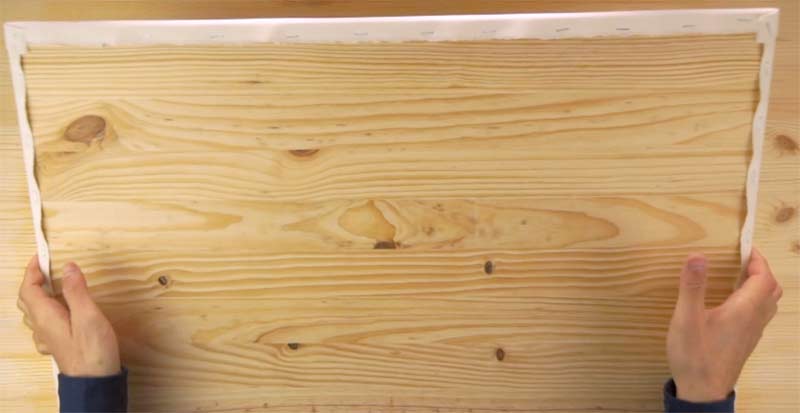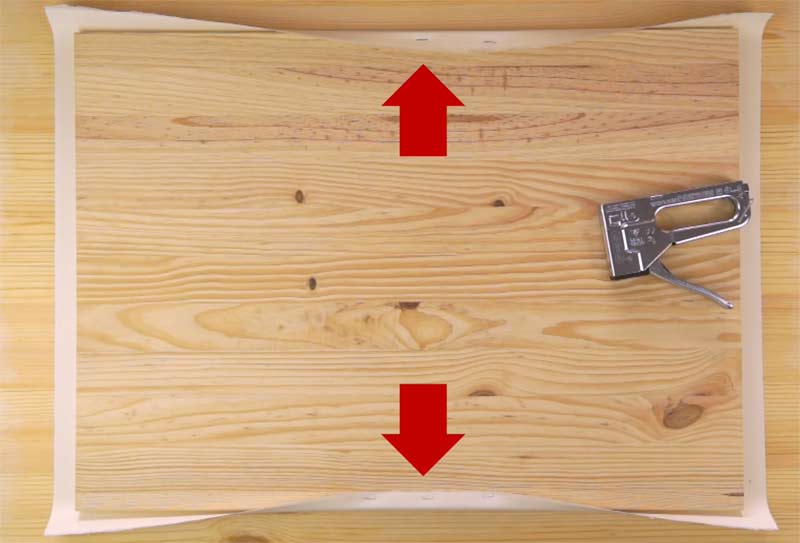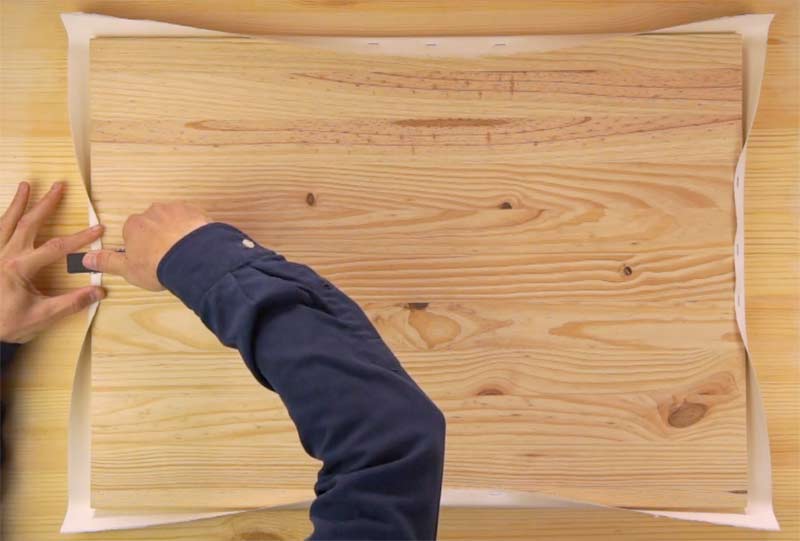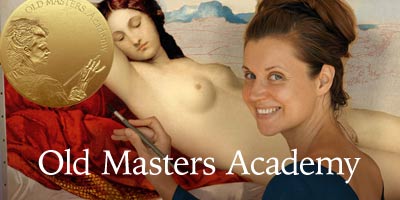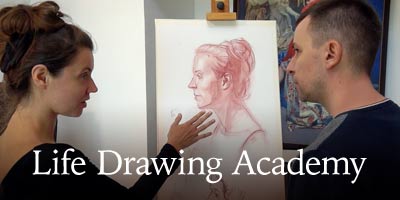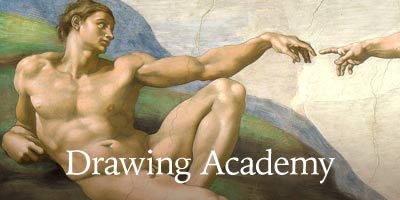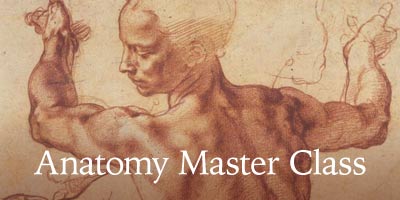Stapling Watercolor Paper to the Board or Stretchers
Article by Vladimir London, Watercolor Academy tutor
Stapling paper to the board is the most secure way to fix it without gluing
A wooden board or a panel must be sturdy enough to give good support without bending. I use 50x70cm 18mm thick boards for stretching full sheets of paper (55x76cm). This dimension allows about 3 cm on each side to be wrapped over the board edges and stapled on the backside.
Before stretching, paper should be dampened on both sides as described above. First wet the front side, then turn the paper over and wet the back. Wait for several minutes for the paper to expand and place the wooden board on top. Start stretching the paper by wrapping its edge in the middle of the longest side and stapling it to the board. Then, fix the middle on the opposite side. Make sure that paper is totally flat under the board. Now, fix the middle edges of the short sides. Thereafter, staple the long side, going from the middle to the corner and leaving about 5cm between each staple. Leave about 10cm unstapled before the corner. Fix the opposite side, this time pulling paper slightly, making sure it is totally flat under the board. Staple the short sides after. Finally, fold the paper corners around the board and staple them in pace.
Some books suggest stapling all four sides simultaneously from the middle to the corners, the same as stretching a canvas. I do not see the benefit in doing that because paper holds its rectangular shape even when wet and will not be distorted diagonally like unprimed canvas. It also takes more time and effort to stretch paper that way and the more you handle the board, the higher risk of accidentally damaging the wet paper.
When the paper is stapled to the board, turn it over and leave it for several hours to dry completely.
Smaller paper sizes, like the Half Sheet or the Quarter Sheet can also be stretched by stapling to the front side of a big board or to smaller boards that accommodate stapling at the back.
In a similar way, watercolor paper can be fixed to wooden stretchers by folding and stapling its edges to the backside. The stretchers that are made for canvas can als be used here. Stretchers are lighter than a solid wooden board but the paper is unsupported from the backside, like a drum skin. This is fine as long as you do not press hard with a pencil or a hand on the paper surface.
To give extra support, you can add an equal sized thin plywood board between the paper and the stretchers. Despite being thin, the board won't bend because the paper tension will be held by the stretcher bars. This backing gives extra support for the paper.
When stapling, do not over-stretch the paper. If too much tension is applied, the paper may split when it dries.
You can take the finished artwork off by cutting paper along the stretcher's bars. Make sure you leave at least half an inch of white paper to be hidden by the mount of the picture frame.
To learn how to paint in watercolor, enroll now
Watercolor Academy Online Course
A self-study, self-paced course where you can learn how to paint in watercolor by watching video lessons and doing assignments
- Unlimited access to 80 watercolor painting video lessons
- Lifetime membership without deadlines
- Unlimited support from the Academy tutors
- Constructive critique of your artworks
- Member access to the Academy's Art community
- Place in the Academy's Students Gallery
- Exclusive members-only newsletter and bonuses
- Watercolor Academy Diploma of Excellence in your name
One-time payment - Lifetime membership
$297 USD
ENROLL NOW
Personal Tutoring online + Online Course
One-to-one, unlimited and custom-tailored to your skills and needs Personal Tutoring by the Watercolor Academy teachers
- Everything in Online Course, plus:
- Dedicated team of art tutors
- Assessment of your current level of art skills
- Personalized curriculum tailored to your skills and goals
- Up to 100 art tasks with by-task assessment
- Unlimited one-to-one personal coaching with detailed per-task instructions and feedback
- Artwork critiques and results-oriented guidance
One-time payment - Lifetime membership
$997 USD
ENROLL NOW

